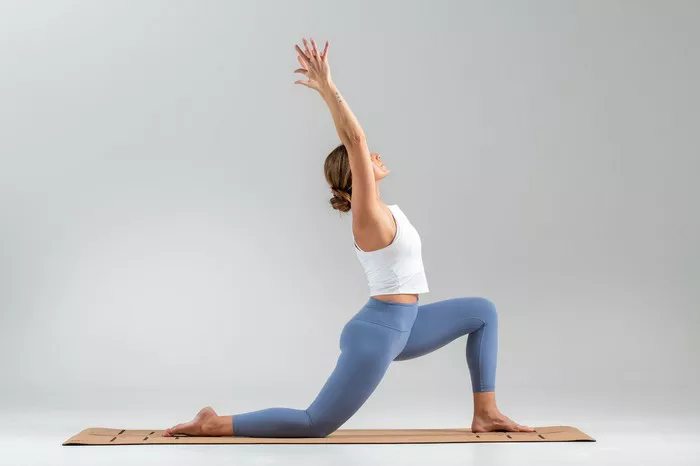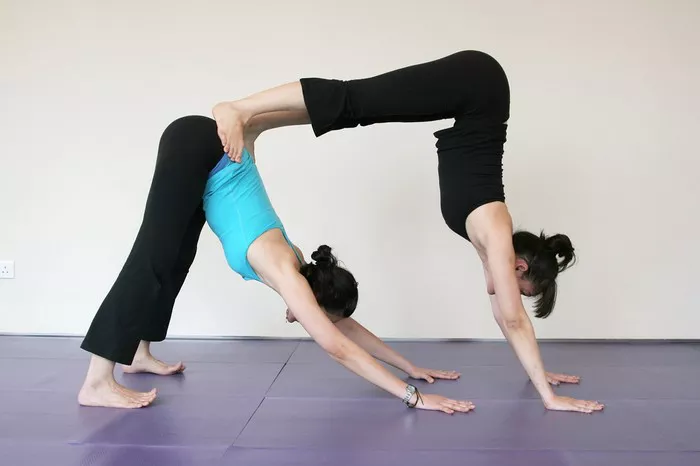Lower back injuries can be debilitating, affecting daily activities and overall quality of life. While seeking medical advice is crucial for proper diagnosis and treatment, incorporating specific yoga poses can aid in managing and alleviating discomfort associated with such injuries. This article focuses on precise yoga poses tailored to target lower back issues, offering relief and support for individuals on their path to recovery.
1. Child’s Pose (Balasana):
This gentle stretch elongates the spine, relieving tension in the lower back. Start by kneeling on the floor with toes touching and knees hip-width apart. Slowly lower the torso forward, extending arms in front with palms resting on the ground. Allow the forehead to touch the mat and breathe deeply, focusing on lengthening the spine and relaxing the lower back muscles.
2. Cat-Cow Stretch (Marjaryasana-Bitilasana):
The rhythmic movement of this pose helps to increase flexibility and mobility in the spine while gently stretching the lower back. Begin on all fours with wrists aligned under shoulders and knees under hips. Inhale, arching the back and lifting the chest towards the ceiling (Cow Pose). Exhale, rounding the spine and tucking the chin towards the chest (Cat Pose). Continue to flow between these two positions, synchronizing movement with breath for maximum benefit.
3. Downward-Facing Dog (Adho Mukha Svanasana):
This iconic yoga pose strengthens the entire back, including the lower back muscles, while also stretching hamstrings and calves. Start on hands and knees, then lift hips towards the ceiling, forming an inverted V shape with the body. Keep a slight bend in the knees if needed and press palms firmly into the mat while lengthening the spine. Hold for several breaths, focusing on elongating the spine and relaxing tension in the lower back.
4. Extended Triangle Pose (Utthita Trikonasana):
Triangle pose engages and strengthens the core muscles while providing a deep stretch along the sides of the body, including the lower back. Begin standing with feet wide apart, then extend arms parallel to the ground. Shift hips to the left and reach towards the right foot with the right hand, keeping both legs straight. Left hand can rest on the hip or extend towards the ceiling for a deeper stretch. Hold the pose, then switch sides to balance the stretch.
5. Bridge Pose (Setu Bandhasana):
This backbend pose strengthens the lower back muscles, glutes, and hamstrings while also improving spinal flexibility. Lie on your back with knees bent and feet hip-width apart. Press into the feet, lifting the hips towards the ceiling while keeping the shoulders grounded. Interlace fingers under the back and roll shoulders underneath, lifting the chest towards the chin. Hold the pose, focusing on engaging the core and lifting the hips higher with each breath.
6. Supine Spinal Twist (Supta Matsyendrasana):
Twisting poses like Supine Spinal Twist help to release tension in the lower back and improve spinal mobility. Lie on your back with arms extended to the sides in a T shape. Bend the right knee and cross it over the body towards the left side, keeping both shoulders grounded. Gaze towards the right hand and breathe deeply, allowing the spine to gently twist and release tension. Repeat on the other side to balance the stretch.
7. Seated Forward Bend (Paschimottanasana):
This seated forward fold provides a deep stretch for the entire back body, including the lower back and hamstrings. Sit on the floor with legs extended straight in front, feet flexed towards the ceiling. Inhale, lengthen the spine, then exhale, hinge at the hips, and fold forward over the legs. Reach for the feet, shins, or ankles, keeping the back straight. Hold the stretch, breathing deeply and surrendering to the pose.
8. Thread the Needle (Parsva Balasana):
This gentle twist releases tension in the lower back and hips, promoting relaxation and flexibility. Begin on all fours with wrists under shoulders and knees under hips. Slide the right arm under the left arm, threading it through until the right shoulder and temple rest on the mat. Extend the left arm overhead or wrap it around the back, deepening the stretch. Hold the pose, then switch sides to balance the stretch.
9. Standing Forward Fold (Uttanasana):
Forward folds like Standing Forward Fold provide a gentle stretch for the entire back body, relieving tension in the lower back and hamstrings. Stand with feet hip-width apart and hinge at the hips, folding forward with a straight spine. Allow the head and neck to relax, reaching towards the ground or grabbing onto opposite elbows. Keep a slight bend in the knees to protect the hamstrings and deepen the stretch in the lower back.
10. Legs-Up-The-Wall Pose (Viparita Karani):
This restorative pose promotes relaxation and improves circulation while gently stretching the hamstrings and relieving tension in the lower back. Sit close to a wall and lie on your back, extending legs up the wall with hips against or slightly away from the wall. Relax arms by your sides, palms facing up, and close the eyes. Breathe deeply, allowing the entire back body to release and surrender to gravity.
Conclusion
Incorporating these precise yoga poses into a regular practice can provide relief and support for individuals with lower back injuries. It’s essential to listen to your body and modify poses as needed, avoiding any movements that exacerbate discomfort or pain. Consulting with a healthcare professional or certified yoga instructor can also provide personalized guidance and ensure safe practice. With consistent effort and mindfulness, yoga can be a valuable tool in the journey towards healing and well-being.




















